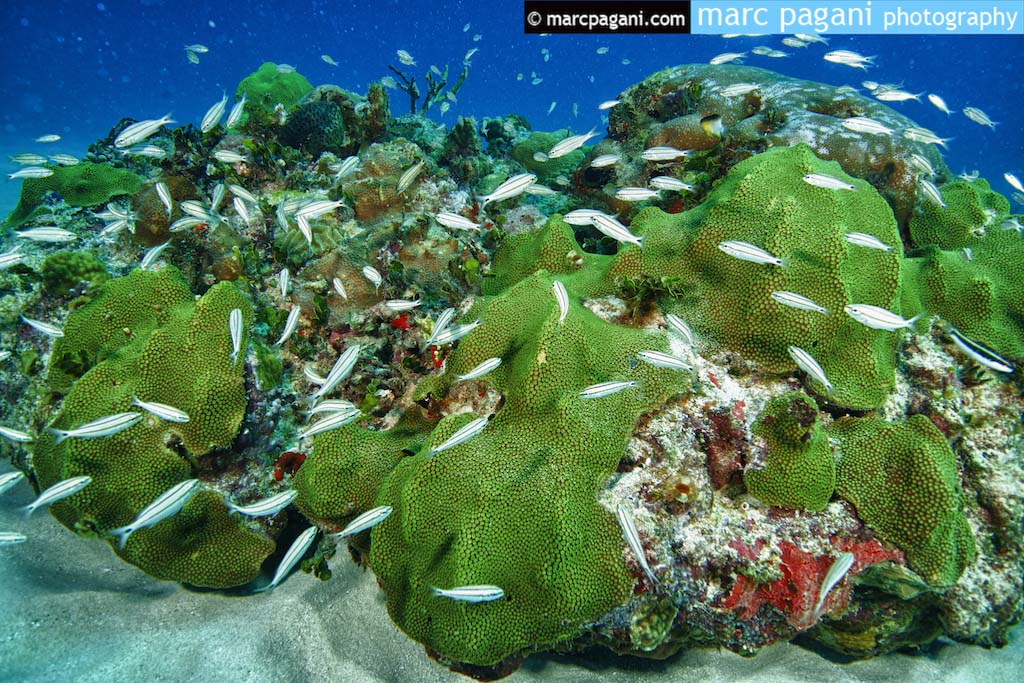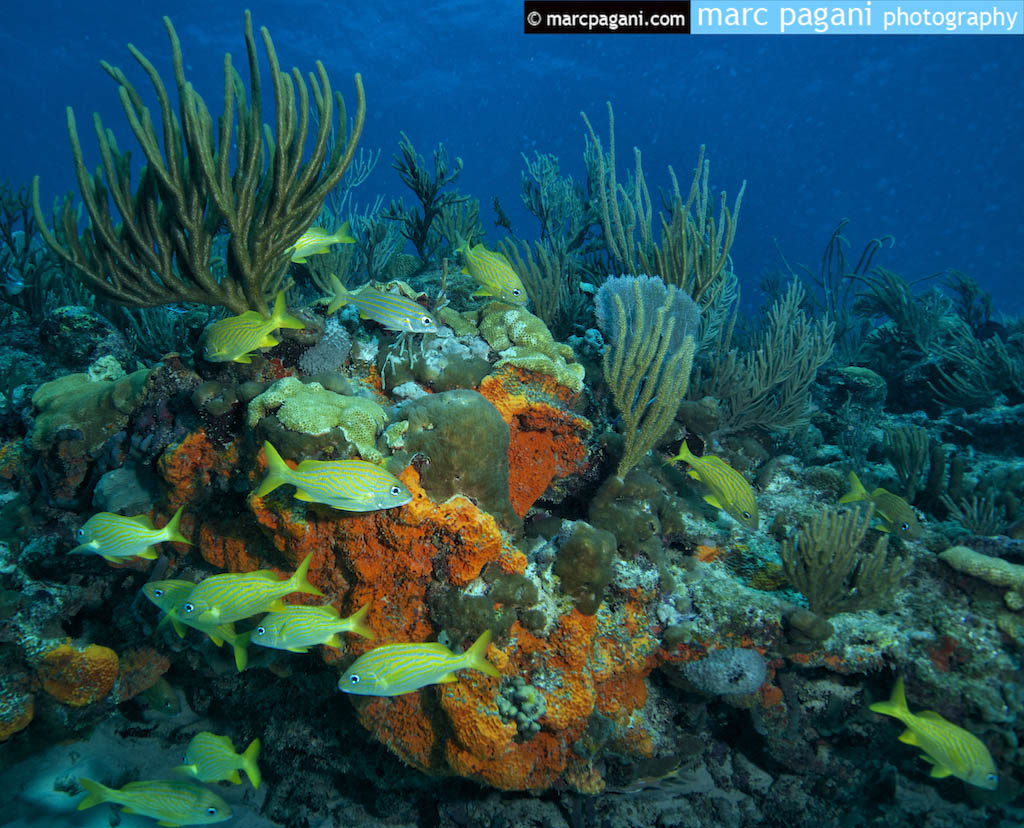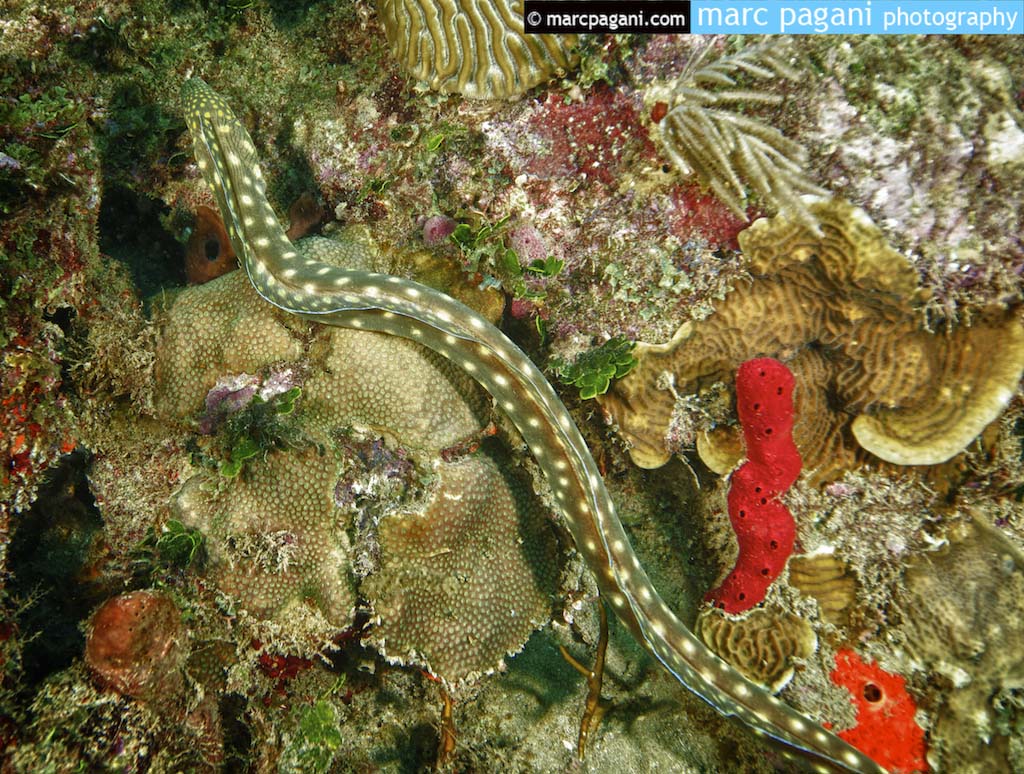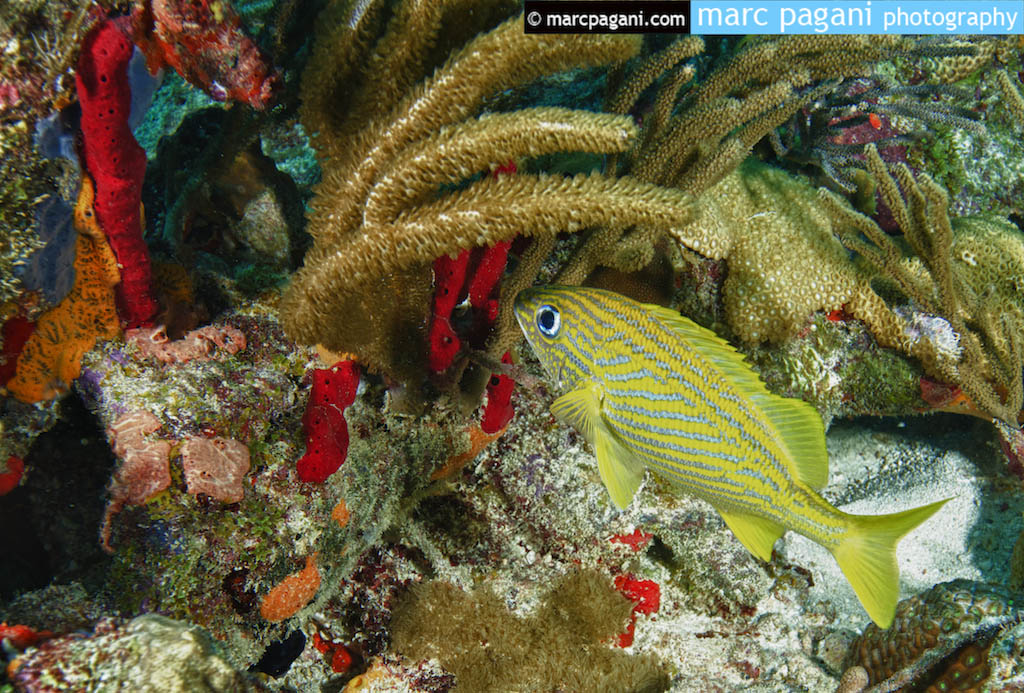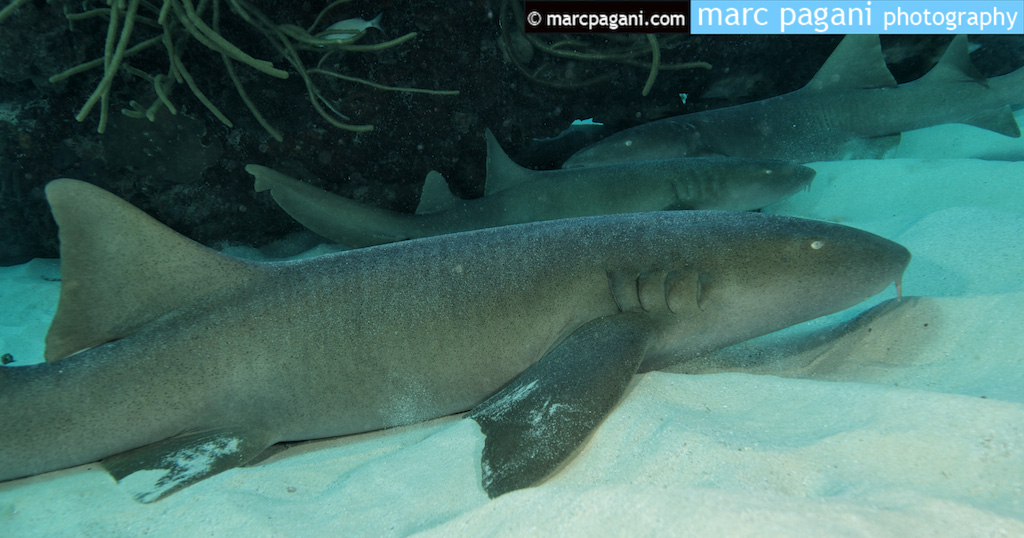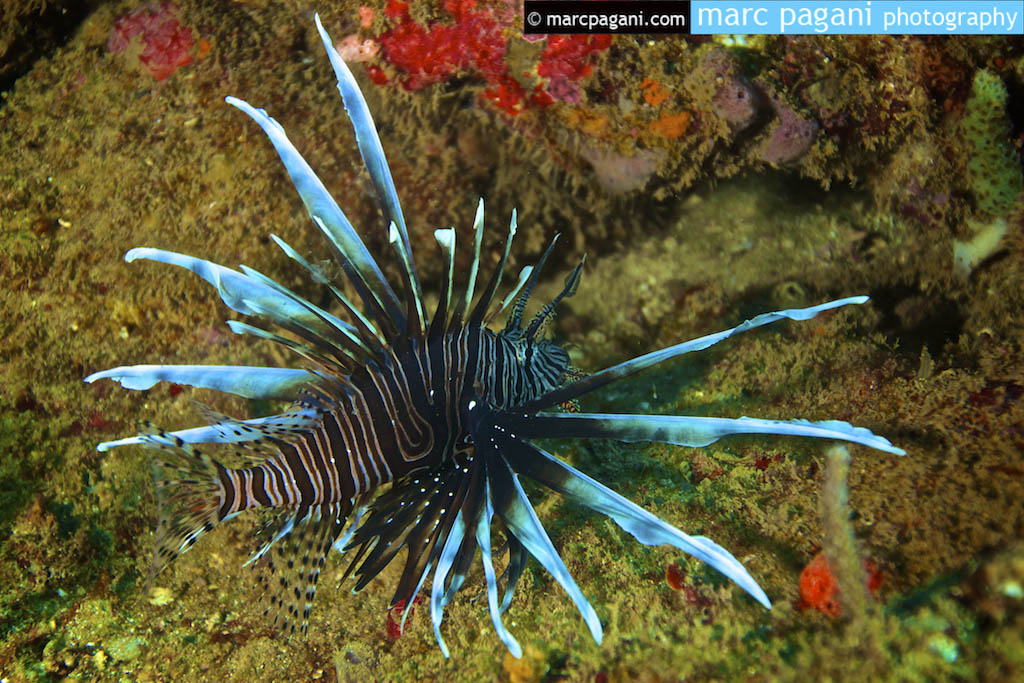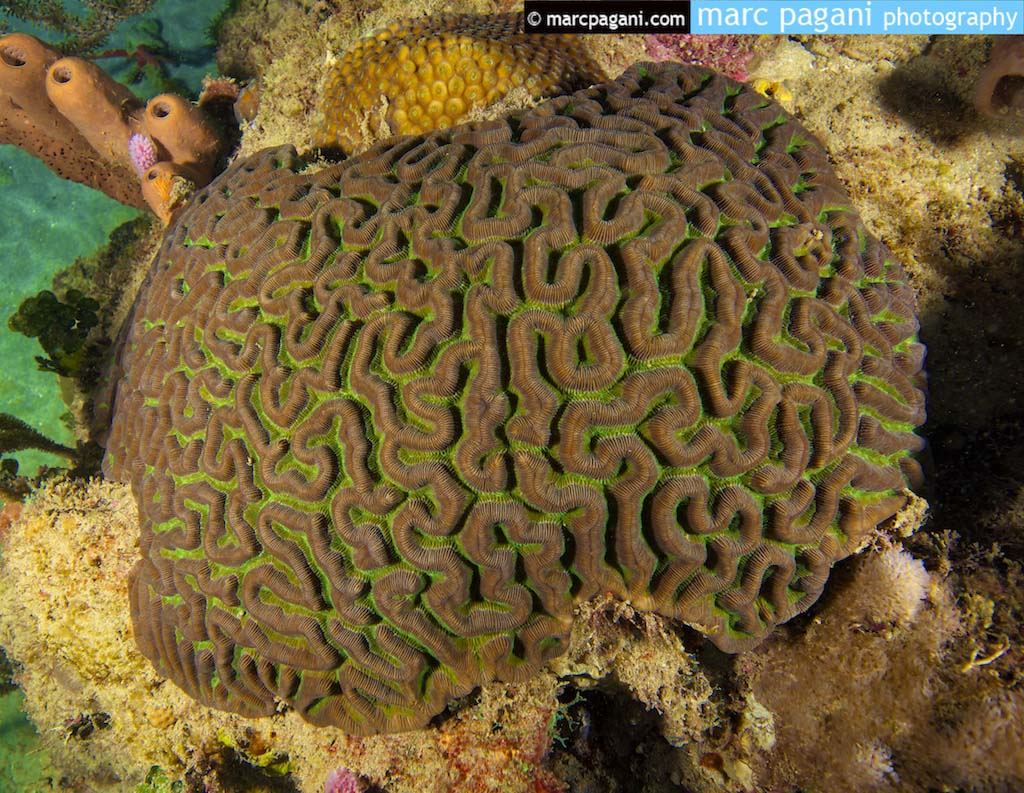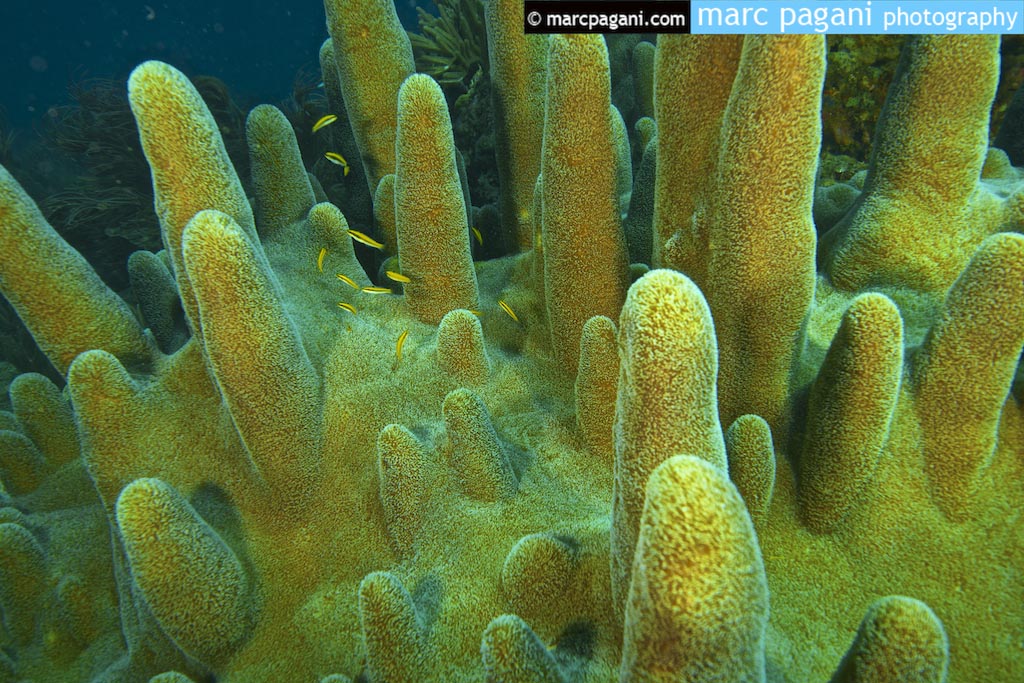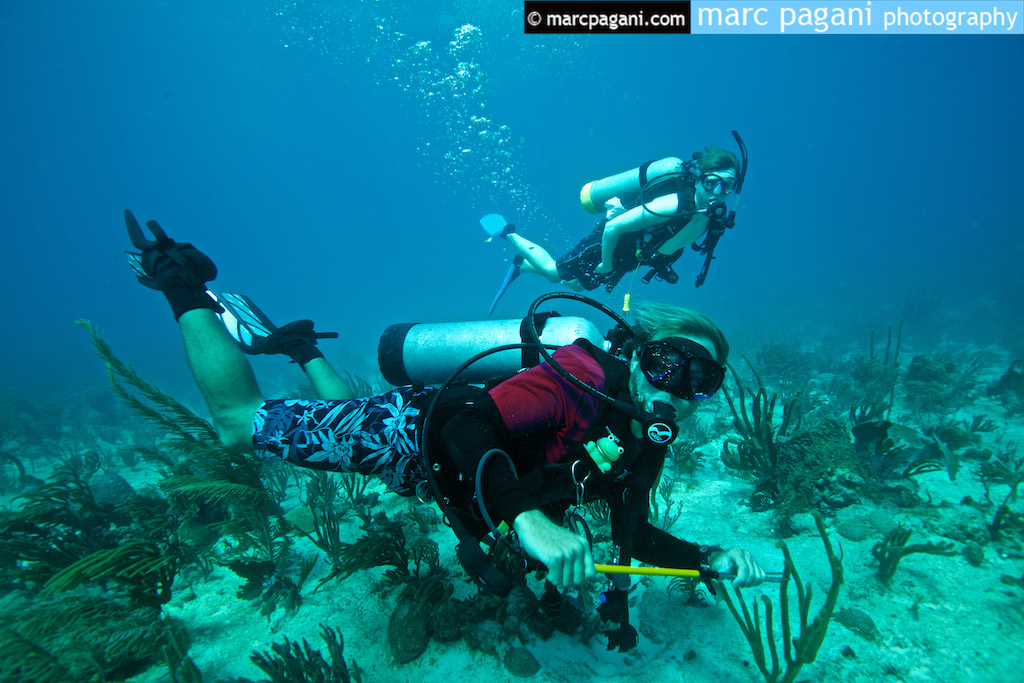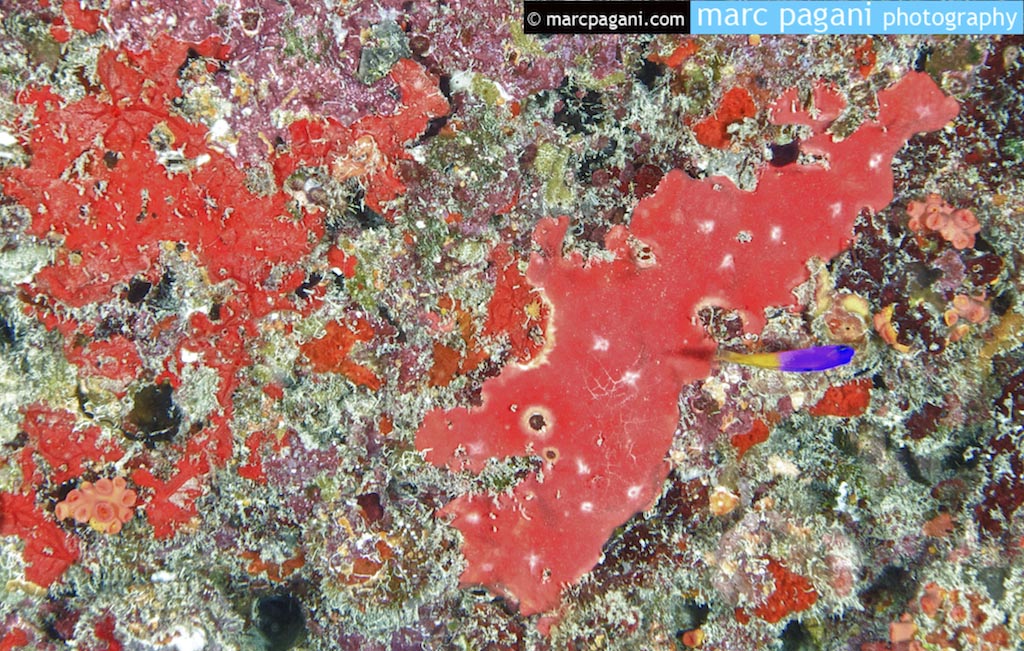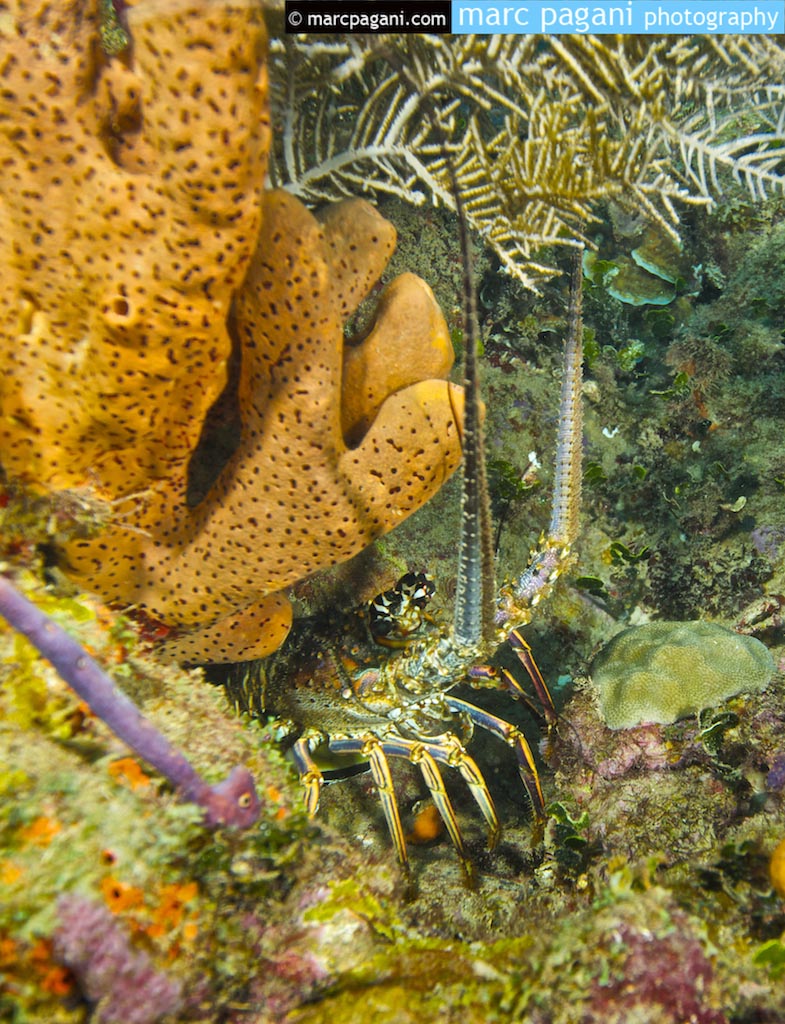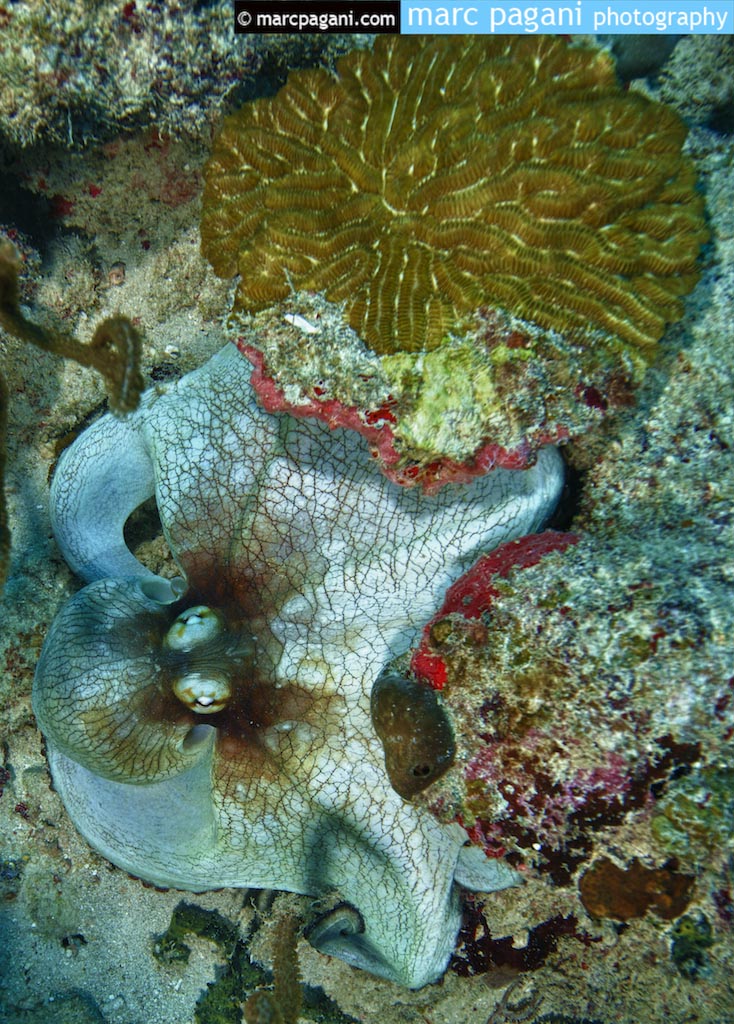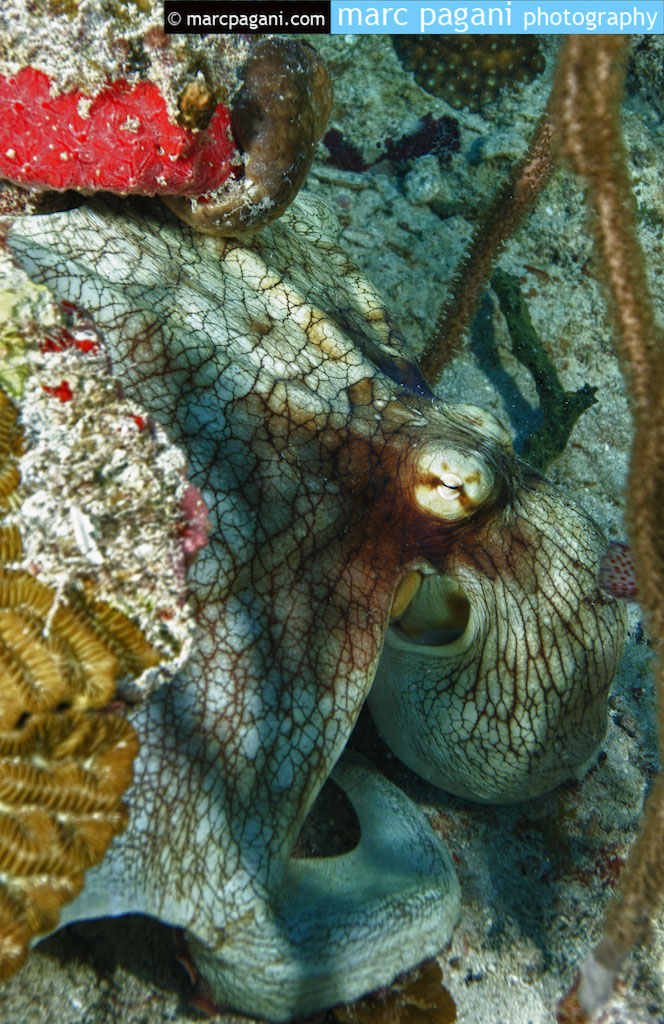I’m Marc Pagani, and I’m an adventure travel, portrait, live music, and wedding photographer based in New Orleans. My most recent book, “Fearless Photographer: Travel”, came out this past November 9th and can be found online and in local bookstores.
Last week, I had my 4th shoot in 2 years in Puerto Rico, this time for my stock agency, Aurora Photos.This was my first opportunity to shoot underwater images of sea life with the Nikon D800, and I think it worked out well. Though I took along my fisheye and 105 Nikkor macro lenses and their respective UW ports, I stuck to my Nikon 16-35mm F4 VR lens in an 8’ glass Ikelite dome. The housing was Ikelite’s model 6812.8 for Nikon D800/D800E. I was using two Ikelite DS-160 strobes (one on either side of the housing). The nice thing about using Ikelite strobes with an Ikelite housing is the reliable TTL strobe metering and the convenience therein. When you’re dealing with changes in water pressure and trying to keep your buoyancy perfect, so as not to disturb the pristine coral reefs, it’s nice to not have to make constant adjustments to the strobe output.
Click on images for a larger view:
Because I went to Puerto Rico with a sinus congestion, it took me a while longer to equalize underwater as I descended, and I endured quite a bit of pain on the way down and the way back up, which I’ve never experienced in my 32 dives thus far. Despite this inconvenience, I was able to focus on getting good images. On the very first dive, we saw a large nurse shark and an amazing octopus that was pure white in color when we first saw it, but managed to changed its shape and markings to closely mimic the rock it was trying to hide under/next to. On the second dive, I encountered a school of 7 nurse sharks that allowed me to get very close.
Shooting your subject at extremely close range underwater is essential to getting a great shot, which is why most UW photographer use a fisheye or a very wide lens. The two main reasons are as follows: a. light travels very poorly in the deep, so in order to expose a subject properly, thereby bringing out the inherent color of that subject (which remains hidden, and looks generally grey to the naked eye due to light/color refraction underwater unless there is an alternate light source, such as a flashlight, or camera strobe) your strobes must be very powerful and/or very close to the subject and b. the water column that exists between you and your subject is full of silt, particulate, fish poop, sand, etc, (it’s known as “backscatter”) so the farther you are away from your subject, the more that backscatter defeats the power of your strobe and/or shows up in your images as cloudiness between your lens and the subject.
Working with the D800 underwater was generally a pleasure, but in low light conditions and in any area that had low contrast, such as in an underwater cave or under an overhanging reef, I did find that the camera was “fishing” (excuse the UW pun) for focus, and I did miss a few shots because of this. I expect that my Nikon D4 could have handled this better, but since much of UW photography is done at low ISO settings, and because I wanted the highest resolution possible for these images, I went with a D800. I also found that the edge sharpness, even with the more expensive 8” glass dome (instead of the cheaper acrylic 6” dome) left something to be desired. Luckily, because most of these images were shot with very loose cropping and because of the high pixel count, I’m able to crop into the images a bit and lose the portion of the image corners that are less sharp.
I have not yet put these images on my website, but you can find the full set on Facebook , and you can also find a set of underwater portraits using the same setup at http://marcpagani.com/galleries/portraits/adult/default.html. Thanks for taking the time to check out my images. Much more above ground imagery at marcpagani.com and paganiphoto.com.
If you have any interesting ideas for a guest post, you can contact me here.
